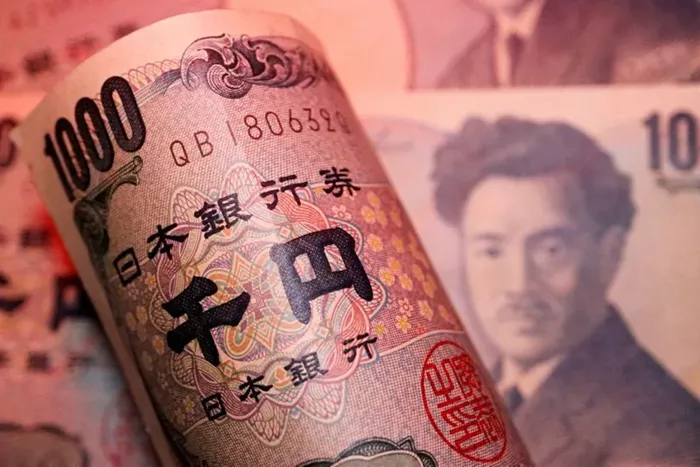The Bank of Japan (BOJ) is set to outline its strategy for scaling back its extensive bond purchases and deliberate on the timing of its next interest rate increase this Wednesday, underscoring its commitment to gradually unwind a decade-long period of substantial monetary stimulus.
This decision comes in the wake of the U.S. Federal Reserve signaling a possible interest rate cut as early as September, reversing its previous aggressive rate-hiking stance which had bolstered the dollar and led to a challenging yen depreciation for Japan.
The narrowing gap between U.S. and Japanese interest rates has contributed to a rebound in the yen from its 38-year lows, alleviating some of the pressure on the BOJ to counteract the currency’s decline through a combination of rate hikes and an ambitious tapering of bond purchases.
However, the yen’s recovery also presents an opportunity for the central bank to raise rates without appearing to directly manipulate exchange rates through its monetary policy, analysts suggest.
“The BOJ has the flexibility to go either way. If it chooses to hike rates now, it can argue that consumer spending will rebound due to increased wages,” commented Yoshiki Shinke, senior executive economist at Dai-ichi Life Research Institute. “Alternatively, it may opt to adopt a more cautious approach and await further economic data. The outlook for consumer spending will be pivotal in their decision-making process.”
Despite its stance that monetary policy is not geared towards influencing currency movements, mounting concerns over a weakened yen have prompted calls from governmental and business leaders for the BOJ to accelerate its departure from near-zero interest rates.
During its two-day meeting concluding on Wednesday, the BOJ is expected to finalize a quantitative tightening (QT) strategy that will likely halve monthly bond purchases over the course of 1.5 to two years, broadly aligning with prevailing market expectations.
Additionally, the board will deliberate on whether to increase short-term rates from their current range of 0-0.1%. This decision is anticipated to be closely contested among policymakers, reflecting divergent views on the appropriate timing for such a move.
A Reuters poll conducted from July 10-18 revealed that more than three-quarters of economists anticipate the BOJ maintaining its current policy stance. Meanwhile, money markets are pricing in a 64% probability of a 10 basis points rate hike.
The BOJ’s announcement will precede the Federal Reserve’s decision, which is likely to maintain interest rates steady in the near term, with a potential rate cut anticipated as early as September.
Economic Recovery Amid Uncertainty
Japan’s economy stands at a critical juncture, marked by core inflation persistently exceeding the BOJ’s 2% target for over two years, alongside the highest base pay increases for workers in three decades.
However, rising living costs have dampened consumer spending, contributing to economic contraction in the first quarter and raising doubts about households’ ability to absorb further price hikes.
Despite this, low real borrowing costs sustained by inflation are expected to prompt the BOJ to signal a gradual path towards higher interest rates, aiming to phase out what it considers to be excessive monetary support.
Insights into this trajectory may emerge from Governor Kazuo Ueda’s post-meeting briefing or the quarterly outlook report scheduled for release after the meeting.
The report is expected to reaffirm the BOJ’s April projection that inflation will stabilize around the 2% target in the coming years, according to sources cited by Reuters.
Governor Ueda has indicated that the central bank will pursue further rate hikes if it becomes convinced that rising wages will support inflation in the services sector, maintaining it durably around the 2% target.
However, potential challenges lie ahead. The yen’s recent strengthening, from approximately 162 to 153 per dollar in mid-July, represents its most significant two-week gain this year. Continued appreciation of the yen could mitigate inflationary pressures stemming from import costs in the months ahead.
Furthermore, uncertainties persist regarding the impact of one-time tax reductions and wage increases on household spending patterns, as evidenced by unexpected declines in household expenditures in May and deteriorating sentiment in the service sector.
“While headline inflation may appear to be exceeding expectations, the underlying factors driving these price movements remain tepid,” remarked Takahide Kiuchi, former BOJ board member and current economist at Nomura Research Institute. “There is limited evidence supporting the BOJ’s view that inflation driven by demand is steadily accelerating towards the 2% mark.”
In conclusion, the BOJ’s upcoming decisions will play a crucial role in shaping Japan’s economic trajectory amidst evolving global economic dynamics and internal challenges.


